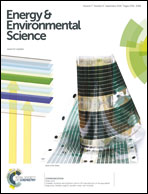Cellulose and hemicellulose valorisation: an integrated challenge of catalysis and reaction engineering
Abstract
Platform molecules have recently been in the focus of numerous investigations as intermediates for transformation of lignocellulosic biomass into fuels and chemicals. Herein we focus on challenges associated with technical implementation of the production of selected platform molecules. 5-(Hydroxymethyl)-furfural, furfural and levulinic acid were chosen to illustrate pitfalls and limitations of currently available catalytic reaction systems. Owing to the prominent reactivity, high polarity and high boiling points of most biomass-derived platform chemicals, the design of efficient, economic and environmentally benign chemical processes offers a number of difficulties. Challenges include not only a selective synthesis of such platform chemicals and their further transformation into potential products but also methods to allow an energy efficient product separation and sufficient catalyst stability under the applied reaction conditions. In this review we discuss three approaches to tackle the integration of catalytic transformations, reaction engineering and product separation. First, extraction-assisted synthesis methods are discussed. In the next step the integration of such extraction-assisted approaches into reaction cascades is considered. Finally, one-pot transformations of lignocellulose-derived carbohydrates into value-added products without isolation of the intermediate platform chemicals are outlined. The present status of predictive tools facilitating the selection of suitable solvent systems for extraction systems is discussed to outline current opportunities and constraints of a theoretical process design and optimization. In summary, this review provides an overview of recent progress with regard to strategies for process integration of chemo-catalytic biomass valorisation and highlights challenges associated with such approaches.


 Please wait while we load your content...
Please wait while we load your content...